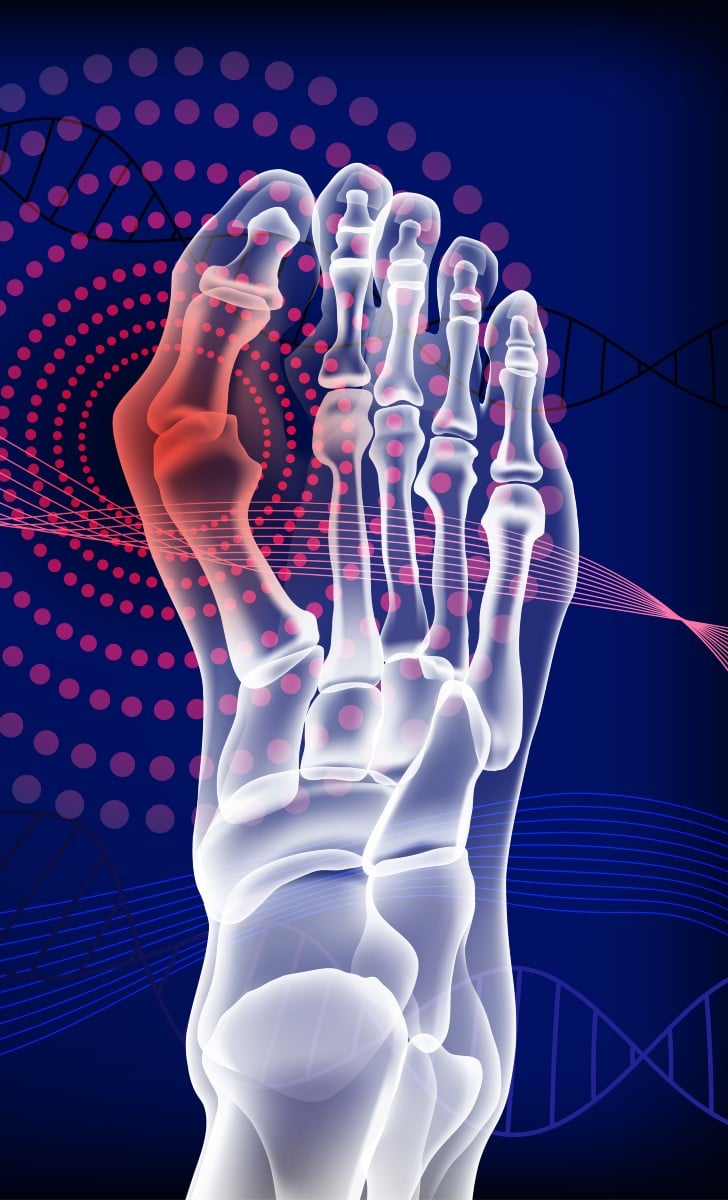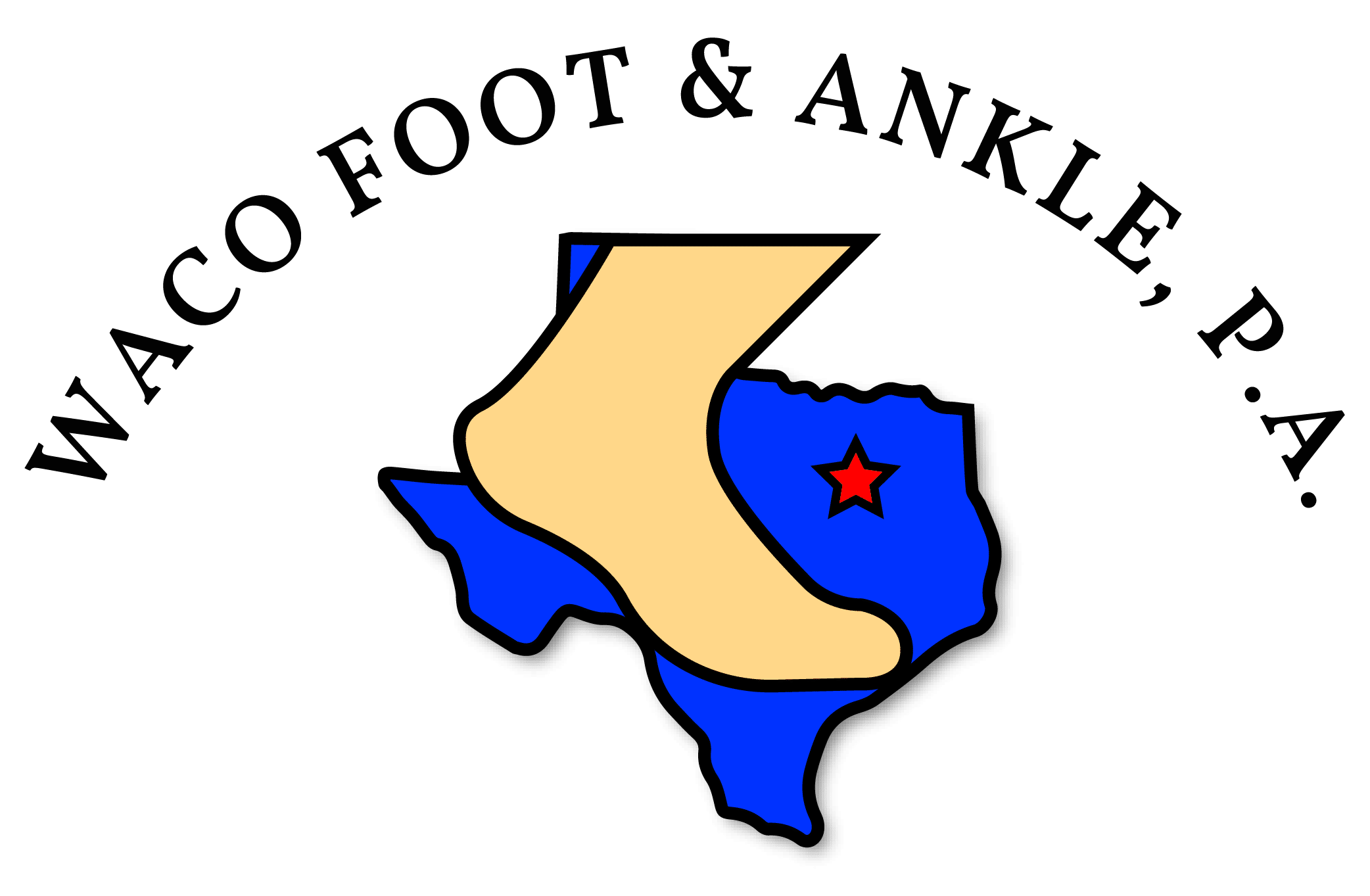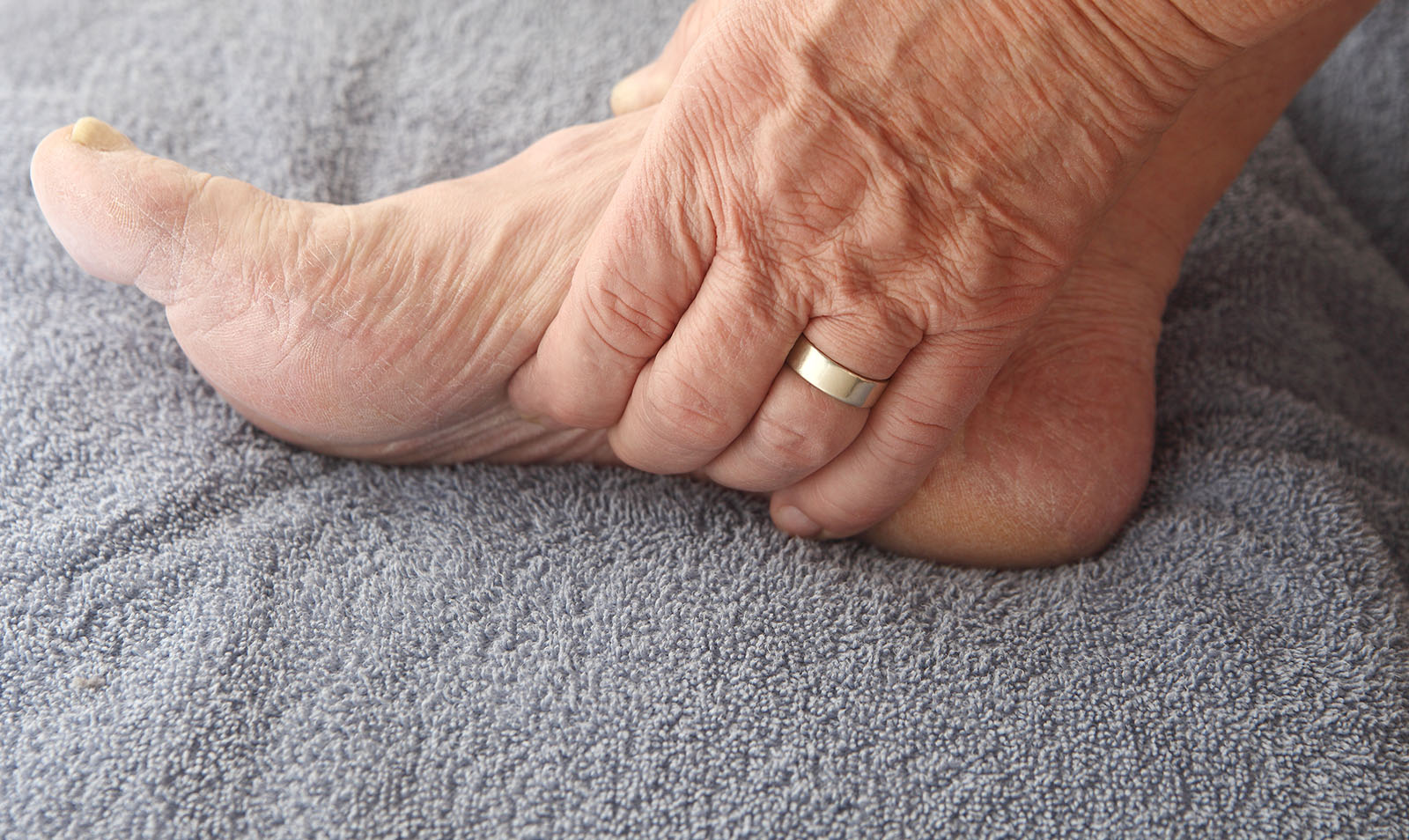Arthritic Conditions
Our Award-Winning Physicians Can Help Relieve Your Arthritic Pain
Arthritis, which simply refers to any type of joint pain or disease, commonly affects the joints of the feet and ankles. There are many different arthritic conditions—more than 100 different types, in fact. The three that we see most frequently at rheumatoid arthritis (RA), osteoarthritis, and gout.
Rheumatoid Arthritis
In this systemic disease, portions of your immune system are trigger to mistakenly attack your own healthy joints. This frequently affects the hands and feet, and will cause an inflammation of the synovium (joint lining). Eventually, long-term inflammation and damage to cartilage and bones can result in permanent deterioration and deformity of the joint. The deformities can become so severe that they limit function and mobility.
RA tends to be hereditary and often one will note a parent or other close family member afflicted with the same condition.
Signs and Symptoms of Rhuematoid Arthritis
The lining of the joints (synovium) produces fluid that allows the ends of bone to glide smoothly against each other. With RA, the synovium thickens and produces excess joint fluid and inflammatory reactions that result in joint swelling.
Symptoms tend to involve hands and feet, and quite often are symmetrical (in other words, the same joints on each foot are affected). Pain is intense in the morning upon arising or getting up after sitting, and tends to persist 30-45 minutes or longer. One may begin to notice deformities and dislocations of the toes, development of bunions and hammertoes, heel pain, flattening of the feet, or even nodules or lumps that are painful or rub against shoes.
Diagnosis of Rheumatoid Arthritis
During your appointment, your doctor will perform a history and physical examination. You will be asked about your symptoms and be examined thoroughly. The doctor will look for joint swelling, pain upon range of motion, and area of maximal pain.
X-rays might be recommended, possibly alongside other imaging such as an MRI or CT scans. This not only helps us assess the involved joint, but also evaluate adjacent muscles and tendons that may be affected by the arthritic condition. Blood tests may also be ordered to assist in the diagnosis.
Treatments for Rheumatoid Arthritis
Conservative (nonsurgical) and surgical options will need to be determined following diagnosis, based on the extent of the arthritic process that exists. Nonsurgical treatments are generally preferred as they have fewer associated risks and complications, and often provide satisfactory relief.
Various forms of conservative treatments may include medications, orthotic inserts, accommodative shoes, aspiration of joint fluid (drawing out fluid), steroid injections, physical therapy, and coordinated treatments with other specialists. RA, however, is a progressive condition and may lead to continued deterioration of the joint. Because of this, surgery may eventually be necessary to alleviate the symptoms to an acceptable level.
Surgical treatment of RA is considered when conservative measures fail. The goal of surgery is to reduce pain and improve general function. Many factors should be considered when contemplating surgery, including various social and lifestyle factors that can affect the post-operative course of care and recovery.

Osteoarthritis
Osteoarthritis is often a part of the aging process for bones and joints. It is the most common form of arthritis among Americans, and it can occur in nearly any joint, including the feet and ankles.
The condition is characterized by degeneration and deterioration of cartilage within joints. Cartilage is a form of connective tissue with the body, and composes the end coverings of two bony surfaces that adjoin each other. This aides in cushioning and shock absorption of the bones during movement. When the cartilage begins to deteriorate, pain and limitation of joint function and mobility can result, which can impede your ability to perform even basic activities of daily living.
Causes of Osteoarthritis
Also referred to as “wear-and-tear” arthritis, osteoarthritis leads to the breakdown of the joint cartilage from repetitive stress and strain over a long period of time. The cartilage deteriorates and loses its ability to absorb shocks and protect the bony surfaces in a joint from smoothly gliding against each other. When the cartilage surface is lost, bone-on-bone rubbing can cause further pain, inflammation, loss of joint space, and bone spurs.
Specific injuries can also lead to osteoarthritis. Various sprains, strains, fractures, and repeated joint injuries will lead to joint deterioration and degeneration.
Abnormal foot function from congenital or acquired foot and ankle deformities are another common risk factor. Poor or unnatural foot mechanics produces excessive stress and strain on one or multiple joints, which can cause them to wear out faster.
Signs of Osteoarthritis
The most common signs of osteoarthritis include, but are not limited to:
- Pain and stiffness of a joint
- Swelling of a joint
- Poor mobility/difficulty walking or bending of a joint
Diagnosis of Osteoarthritis
At your appointment, your doctor will perform a history and physical examination. You will be asked about your symptoms and be examined thoroughly for such things as joint swelling, pain upon range of motion, and area of maximal pain. X-rays might be recommended along with other tests to not only assess the involved joint, but also evaluate adjacent muscles and tendons that may be secondarily affected from the arthritic condition.
Treatments for Osteoarthritis
Conservative (nonsurgical) and surgical options will need to be determined following diagnosis, based on the extent of the arthritic process that exists. Nonsurgical treatments are generally preferred as they have fewer associated risks and complications, and often provide satisfactory relief.
Various forms of conservative treatments may include:
- Oral medications such as nonsteroidal anti-inflammatory drugs (NSIADs)
- Corrective foot orthotics to wear in shoes to improve the foot mechanics or provide cushioning
- Bracing to support the affected joint(s)
- Temporary immobilization in the form of a cast boot or cast
- Steroid injections
- Laser therapy
- Physical therapy
Osteoarthritis, however, is a progressive condition and may lead to continued degeneration of the joint, ultimately requiring surgery to help alleviate the symptoms to an acceptable level. The goal of surgery is to reduce pain and improve general function. Many factors should be considered when contemplating surgery, including various social and lifestyle factors that can affect the post-operative course of care and recovery.
Gout
Gout is a form of arthritis that results from a buildup of uric acid in a joint. Your body naturally produces uric acid, but when it produces too much—or lacks the ability to remove it efficiently—the excess uric acid can cause significant problems. Gout attacks are often abrupt and can be extremely painful, and may last hours or even longer. They are especially common in the joint at the base of the big toe.
Causes of Gout
Uric acid is created naturally by the body as a byproduct from the breakdown of purines. These molecules are present in many foods, particularly red and organ meats, some seafood, and other sources.
Ordinarily, excess uric acid in the bloodstream is filtered by the kidneys and exits the body in urine. However, when the body can’t efficiently eliminate the uric acid fast enough (for example, due to kidney disease), it may start to build up in the joints, depositing on them in crystalized form.
Since gout tends to occur in areas of cooler temperatures, the big toe is a prime location due to its location far from the heart.
Symptoms of Gout
A gouty attack is extremely painful, and may occur suddenly and without warning—even while you sleep. The affected joint also becomes very red, hot, and swollen. There may be an associated injury, but quite frequently, there is no inciting event. Symptoms may be so intense that even placing a bedsheet over the affected area is very painful.
Diagnosis of Gout
During your appointment, your doctor will perform a history and physical examination. You will be asked about your symptoms and be examined thoroughly. The doctor will look for joint swelling, redness, and pain.
X-rays might be recommended to further evaluate the involved joint. Aspiration (drawing of joint fluid) and blood tests may also be ordered to assist in confirming a gout diagnosis.
Treatments for Gout
Initial treatment of gout generally includes medications or steroid injections to calm the pain, swelling and inflammation. Resting, elevation, and immobilization will also assist in providing short-term relief.
Dietary restrictions are an important part of gout treatment and prevention. Foods and beverages high in purine content should be avoided. You should also avoid alcohol, which can lead to dehydration. Regular fluid intake is necessary to maintain proper hydration.
An immediate gout attack typically resolves in three to ten days with treatment, but can persist longer in some cases. Recurrent flare-ups place one at risk of possible arthritic damage to the joint.
Long-term treatment of gout may be necessary if you experience repeated attacks. Treatments vary based whether your body produces too much uric acid, or simply cannot excrete it fast enough. Either could be the primary cause of repeated gout attacks.
Arthritis Care in Waco
If your foot and ankle joints are in pain, trust the podiatric experts at Waco Foot & Ankle to provide an accurate diagnosis and an effective treatment remedy. You can request an appointment online, or call our office directly at (254) 776-6995.

